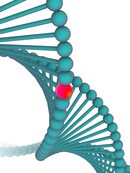 Beta-carotene and vitamin A
Beta-carotene and vitamin A
Vitamin A is essential for normal growth and development, immune system, vision and other functions in the human body. National survey data show that the intake of preformed vitamin A (retinol) – as such only present in animal products (especially liver) – is often critically low and does not meet the recommendations. As beta-carotene can be converted by the body to vitamin A, the carotenoid contributes significantly to balance inadequate vitamin A intake in large parts of the population. The bioavailability of beta-carotene is influenced by food-related factors including linkage strength in the food, food processing, dosage, and fat in the meal. Additionally, consumer-related factors such as vitamin A status, gut integrity and genetic variations determine the amount of beta-carotene used as vitamin A source.
The extent to which beta-carotene is converted to vitamin A is highly variable between well-nourished healthy individuals. Recent research has shown that almost 50% of women have a genetic variation which reduces their ability to produce sufficient amounts of vitamin A from beta-carotene. Such ‘poor converters’ seem to have a polymorphism in the gene coding the key enzyme responsible for beta-carotene conversion. Younger women carrying the genetic variation may be at particular risk as they tend to eat not enough vitamin A-rich foods relying heavily on the beta-carotene form of the nutrient.
Experts speculate that approximately 40 percent of all Europeans possess a gene variant that restricts the amount of beta-carotene their bodies can convert into vitamin A. If the gene-related restrictions are taken into account, the intake recommendations for beta-carotene would need to be increased for those who carry the genetic variation, they suggest. Further investigations in this direction are currently underway.
 Consequently, scientists have suggested recommendations for micronutrient intakes should also consider genetics. People who have a gene-related reduced metabolic ability to convert a vitamin precursor to its active form, for example, could be advised to increase their vitamin intake. This also may have ramifications for public health through improved predictions of micronutrient insufficiency-related diseases and help to identify individuals who may benefit the most from eating certain foods or taking supplements. In addition, differences in individual genetics could help explain the results of some of the large-scale
Consequently, scientists have suggested recommendations for micronutrient intakes should also consider genetics. People who have a gene-related reduced metabolic ability to convert a vitamin precursor to its active form, for example, could be advised to increase their vitamin intake. This also may have ramifications for public health through improved predictions of micronutrient insufficiency-related diseases and help to identify individuals who may benefit the most from eating certain foods or taking supplements. In addition, differences in individual genetics could help explain the results of some of the large-scale  Beta-carotene and vitamin A
Beta-carotene and vitamin A B vitamins
B vitamins Vitamin C
Vitamin C Vitamin D
Vitamin D Vitamin E
Vitamin E